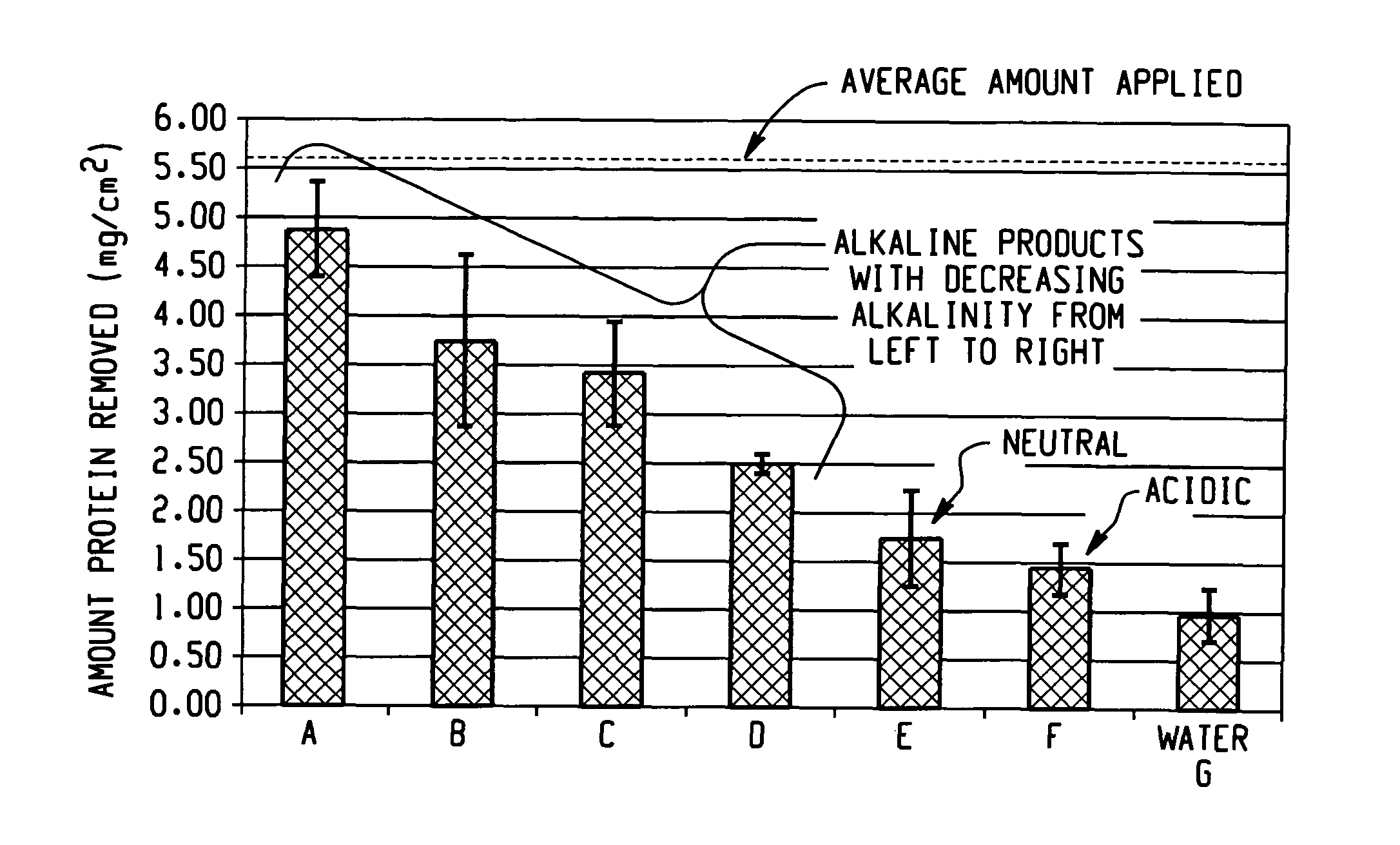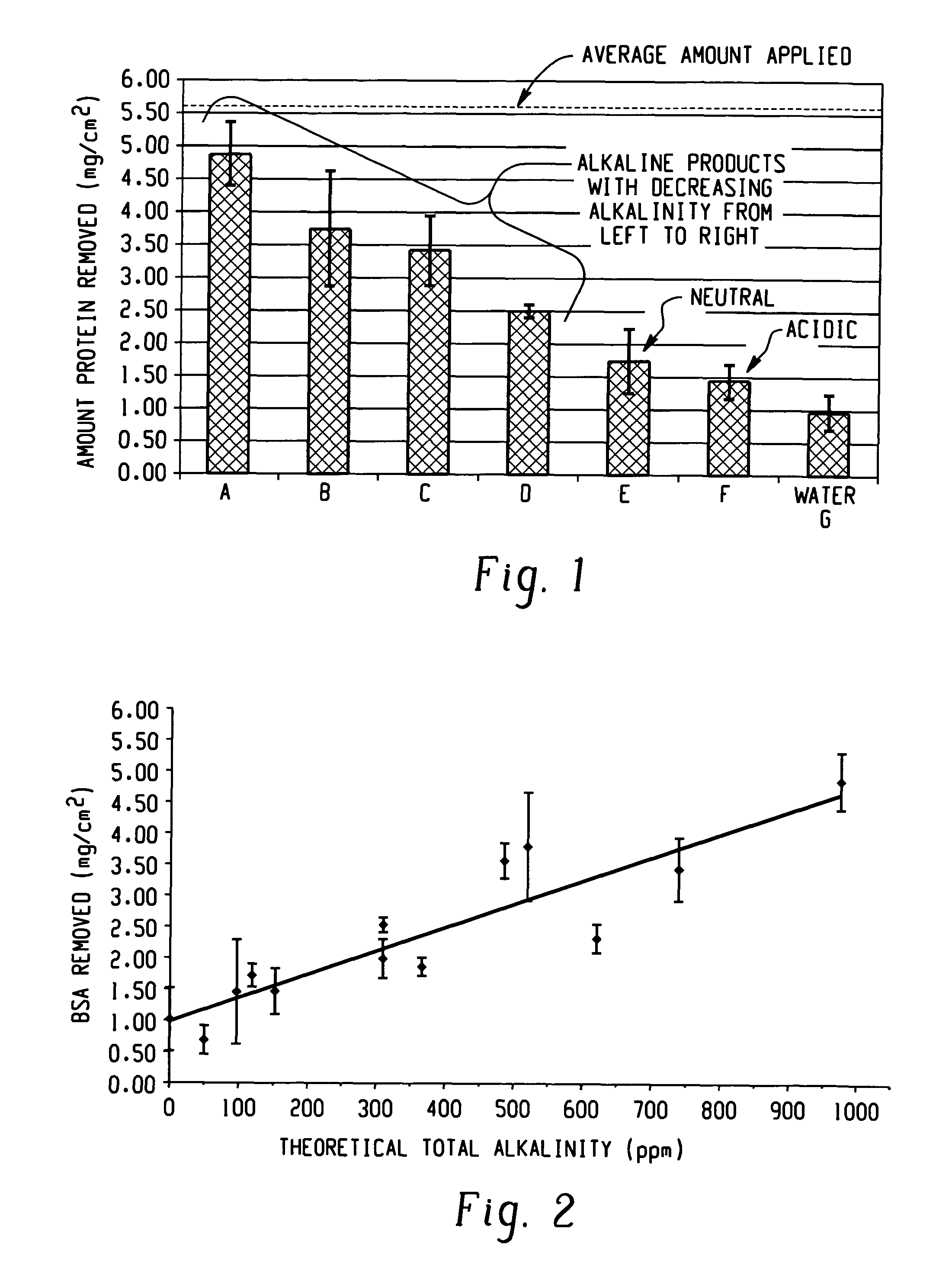Decontamination of surfaces contaminated with prion-infected material with gaseous oxidizing agents
a technology of prion-infected materials and gaseous oxidizing agents, applied in the field of biological decontamination, can solve the problems of ineffective breakdown, tissue damage, cell death, etc., and achieve the effect of deactivating prions quickly and effectively and facilitating instruments
- Summary
- Abstract
- Description
- Claims
- Application Information
AI Technical Summary
Benefits of technology
Problems solved by technology
Method used
Image
Examples
example 1
[0107]To test the efficacy of vapor hydrogen peroxide a BIER vessel as described above (FIG. 7) is used to study the reduction in a prion model (IFDO). Stainless steel coupons are inoculated with samples of a suspension of IFDO in a sterile medium and dried. The dried coupons are exposed to one of three processes. In the first process, coupons are exposed to vapor hydrogen peroxide at atmospheric pressure and at a concentration of 1.5 mg / l and a temperature of 30° C. for 15 minutes. In the second process, inoculated coupons are exposed to vapor hydrogen peroxide at atmospheric pressure and at a concentration of 3 mg / l and a temperature of 40° C. for 15 minutes. In the third process, a vacuum pump is applied to the chamber to reduce the pressure to less than about 10 Torr (1.33×103Pa). Six pulses of hydrogen peroxide vapor at 30° C. are then introduced at a concentration of about 2.5 mg / ml, each spaced by an approximately 10 Torr evacuation step, as described in connection with FIG. ...
example 2
[0109]The effects of temperature and concentration of vapor hydrogen peroxide are investigated in a vacuum sterilizer having a coupon introduction port similar to that shown in FIG. 7. Stainless steel coupons are inoculated with samples of a suspension of IFDO in a sterile medium and dried. The dried coupons are exposed in the BIER vessel, which is first lowered to a pressure of less than about 10 Torr (1.33×103Pa). A single pulse of hydrogen peroxide vapor at a selected temperature and concentration is introduced. The results are shown in Table 4.
[0110]
TABLE 4HydrogenperoxideLog reduction inExperimentTemperatureConcentrationIFDO organisms130° C.2.2 mg / l3-4240° C.5.5 mg / l8340° C.2.0 mg / l5.5450° C.7.5 mg / l8
[0111]The amount of IFDO remaining is obtained by culturing the IFDO remaining on the coupons and observing the growth of colonies, if any. The number of colonies developed from IFDO remaining on the vacuum treated samples is less than 1 log, i.e., at least a six log reduction in I...
example 3
[0112]Experiments designed to evaluate the breakdown of proteins are carried out using BSA protein as a model for prions. Aliquots of a suspension of BSA are droppered onto stainless steel coupons and dried. The protein contaminated coupons are examined before or after a vapor hydrogen peroxide treatment process (1 hour in a STERIS VHP 1000™ sterilizer using about 1.5 mg / L vapor hydrogen peroxide at 25° C.). The recovered protein is evaluated by gel electrophoresis to separate out complete proteins from smaller fragments. The results show that VHP effectively destroys proteins.
PUM
| Property | Measurement | Unit |
|---|---|---|
| temperature | aaaaa | aaaaa |
| temperature | aaaaa | aaaaa |
| pressure | aaaaa | aaaaa |
Abstract
Description
Claims
Application Information
 Login to View More
Login to View More - R&D
- Intellectual Property
- Life Sciences
- Materials
- Tech Scout
- Unparalleled Data Quality
- Higher Quality Content
- 60% Fewer Hallucinations
Browse by: Latest US Patents, China's latest patents, Technical Efficacy Thesaurus, Application Domain, Technology Topic, Popular Technical Reports.
© 2025 PatSnap. All rights reserved.Legal|Privacy policy|Modern Slavery Act Transparency Statement|Sitemap|About US| Contact US: help@patsnap.com



